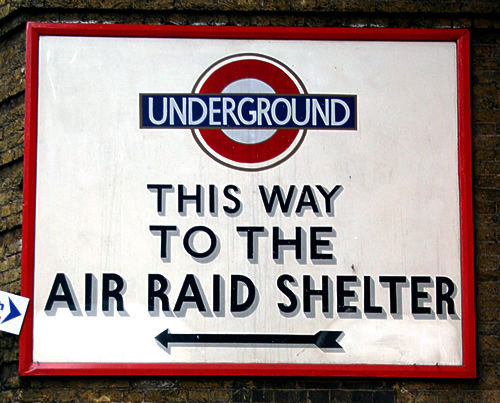

During the war years there was a need for something safer than our houses, shelters that could better stand up to the heavy bombing raids, The house walls may of been strong but the roof was the weakest point and stood no chance against dropping bombs. Many houses with gardens built Anderson shelters, a curved corrugated iron sheet that was partly buried and covered with earth or sand bags. But many London homes did not have gardens, and if there was no basement the only protection was to sit under a strong table, sit under the stairs or using a Morrison shelter, a large iron cage that resembled a Rabbit hutch.
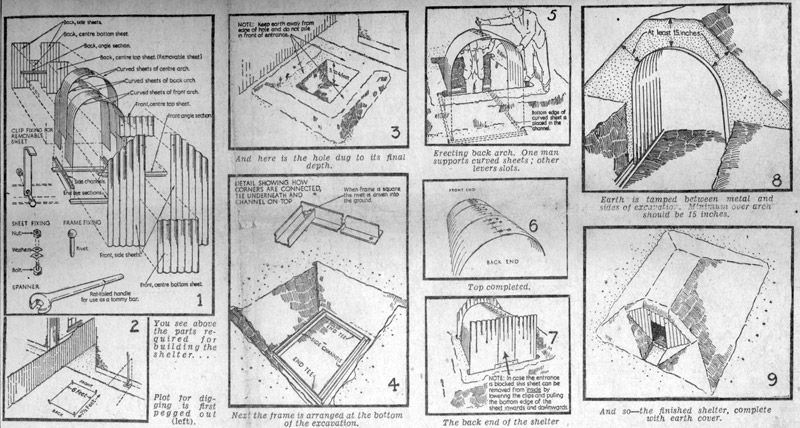
So in some towns communal shelters were built, some of these were just piles of sand bags. but some were purpose built out of stone or brick and suitably located depending on size to provide shelter for several houses. In areas with higher population due to multi-floor housing or offices, Brick Communal Shelters as shown above were built in the street, or large underground structures and railway arches were converted into bomb shelters that could house even more during a raid.
In London and other big cities that had a tube railway system, the stations were eventually opened up at night when the tube trains stopped work and the station platforms used as bomb shelters by hundreds of residents. Along the station walls wooden or metal frames were built to create bunk beds, sometimes 3 or 4 high, Some stations were so packed that sheets and blankets were made into hammocks and were strung across the actual railway tracks to provide more sleeping room.
The underground tunnels and stations were also used as makeshift factories.
In the City of London however, one of the stations which would of been used as a bomb shelter was required to remain open through the night to enable the running of trains transporting urgent supplies to rebuild London after the intense bombings.
The platforms at Chancery Lane were needed to unload these building supplies from the trains, and this severley reduced the provision of air raid safety for those in that area, so during the war the Government decided to build a special 'Deep Shelter' for those in the vicinity to use. There were a few of these style shelters built across London.
31 - 33 High Holborn
London
W.C.1
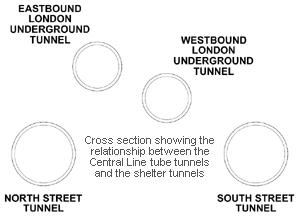
These 'Deep Shelters' built below the existing underground railways tunnels were to originally house 12,000 people. They were designed as a small city, supplied with their own water supplies, canteens, power generation and air filtration systems. The tunnels were lined with thousands of bunks.
1040 places were reserved for government officials
The army was assigned to prevent others from trying to enter.
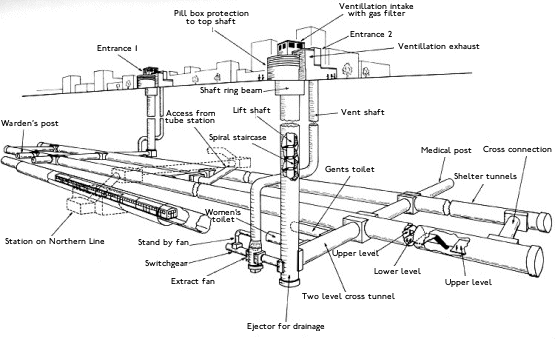
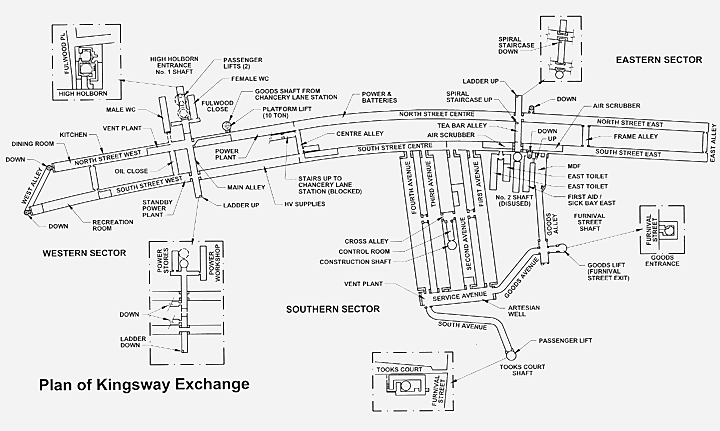
Apart from being used as a air-raid facility, the complex was also used to store Government documents, Following the second world war it was used as the Public Records Office and the bunks which lined the walls of the tubes were used as shelving to house over 400 tons of documents which dated back to the Doomsday Book, and which eventually exceeded capacity of the complex and had to be moved and stored in other locations in Kent.
Due to the high risk of communication failure if the telephone system and above ground communication buildings came under attack, the Post Office moved all their vital switchgear and exchange equipment into the tunnels
More details about the Kingsway Tunnels can be found at the following website
http://www.subbrit.org.uk/rsg/sites/k/kingsway/index1a.html
There are other Deep Level Shelters scattered across London
No I don't think so.
If you have already read my account of entering a secretive tunnel whilst I was a London Ambulanceman in the 80's then I am sure you will understand my doubts, if not then take a look at 'London Secret Tunnel - Kingsway' to understand.
For one there is no Road access or ramp from the Kingsway into the Chancery Lane Deep Shelter, There were goods lifts but generally the site was accessed by steep steps sealed with airtight doors.
The tunnels although long are not that high, certainly not high enough to drive an ambulance through.
The tunnels do not open out into a very large area the size of a football pitch.
If you look at the map of the Deep Underground Shelter above, and then compare this with the map of local roads using Google Earth or Multimap you can see that they are located within easy tunnelling reach of the Kingsway Tram Underpass, although the tram tunnels especially the entrance slope are similar, again there is no large area underground that matches.
Maybe it was a combination of the two ?
Maybe since the War years these two have been secretly linked together to provide vehicle access. but I don't think so, somebody would of recorded it and discussed the changes by now.
And it still does not match what I saw!
Maybe as more and more of these previously 'Secret' establishments are declassified we will learn more about what lies under London!